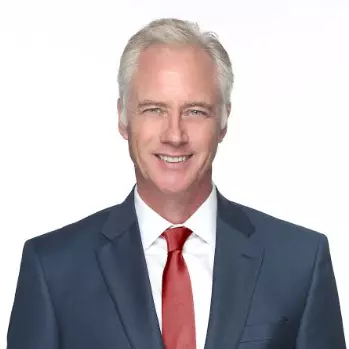Case Study
Dan Brunn Architecture uncovers the singular art moderne beauty of a corner property in Beverly Hills, transforming its interior into a suite of stunning offices and the city’s hottest restaurant
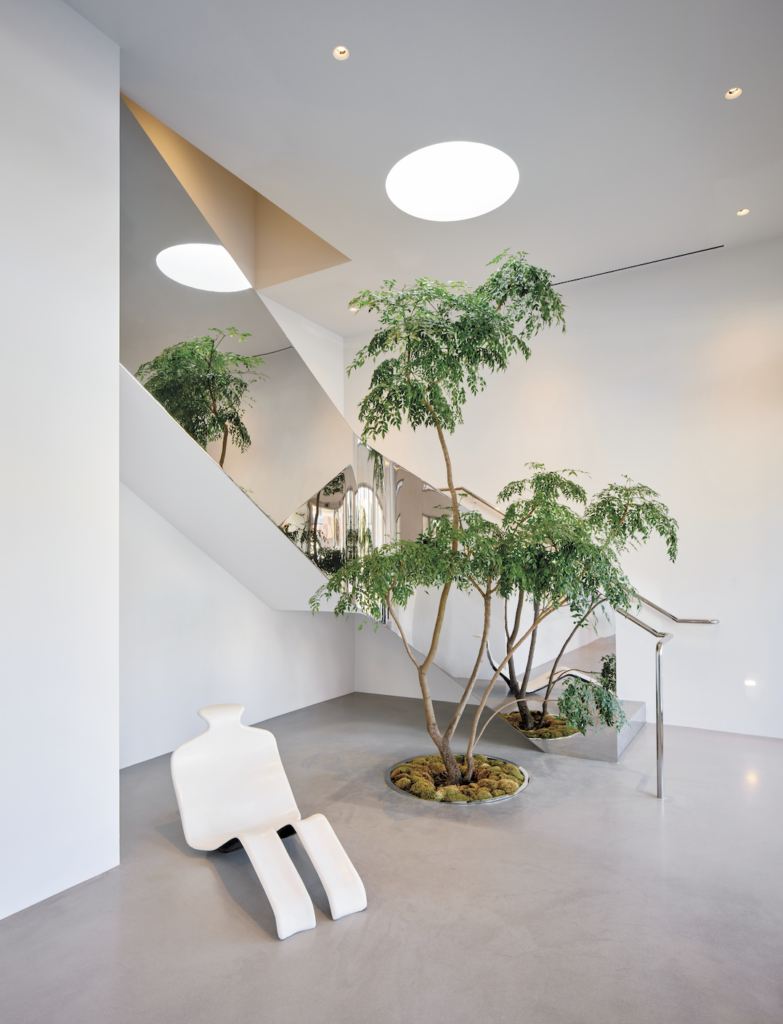
Luck, they say, is what happens when preparation meets opportunity. Certainly, architect Dan Brunn—who was poised for the next big moment in a career already marked with a number of intriguing high points including the Bridge House (a home arched over a creek, the reimagining of a project originally designed by Frank Gehry) and winner of this magazine’s Emerging Designer award—knew timing was everything when he met real estate developer Kurt Rappaport.

That encounter happened after Brunn suggested his business development team email Rappaport as part of the firm’s outreach to potential clients. He was elated when they received a response. “We were excited we got a hit,” says Brunn of that first bit of good fortune, but he was cautiously optimistic. Serendipitously, Rappaport had recently purchased a property on the corner of Santa Monica Boulevard and Canon Drive in Beverly Hills and was in the market for a commercial architect. Brunn knew that, as owner of Westside Estate Agency, with clients that range from Larry Ellison to Brad Pitt and LeBron James, Rappaport had the entire spectrum of Southern—if not Northern—California architects at his disposal. “‘I have an immense Rolodex. I don’t need to expand it,’” Brunn remembers Rappaport saying at their first meeting.

But Brunn’s proposal for the site was met with enthusiasm. “I remember passing that building as a kid and being struck by how its original 1920s glory had been horrifically subdued by the postmodern armature of the ’90s,” Brunn muses. “So this project really touched home for me, and I think I came in with a lot of passion because of it.” His vision coincided with Rappaport’s ideas. “When I described what I thought it should be—I wanted to bring back the glory and the glitz of Beverly Hills and Hollywood of the ’20s and ’30s—he said, ‘Exactly.’” Call it lucky break number two.
Poised at a crossroads in Beverly Hills that also showcases the Wallis Annenberg Center for the Performing Arts, the Spanish Revival-style Beverly Hills City Hall and the Union 76 gas station, the bar was high. But Brunn did his due diligence. He immersed himself in the city’s archives of the property and discovered original photos of the building. “We didn’t copy it, but we did a reinterpretation,” he shares. “We added a modernist layer. So if you drive by it you might think, ‘Oh, I thought that’s how it has always been,’ which is the best, right? That nobody notices that you did anything.” The elements include the spire, a new addition, cast in stainless steel, with a rough finish that nods to the pewter used for New York’s Empire State Building, and the building’s windows.
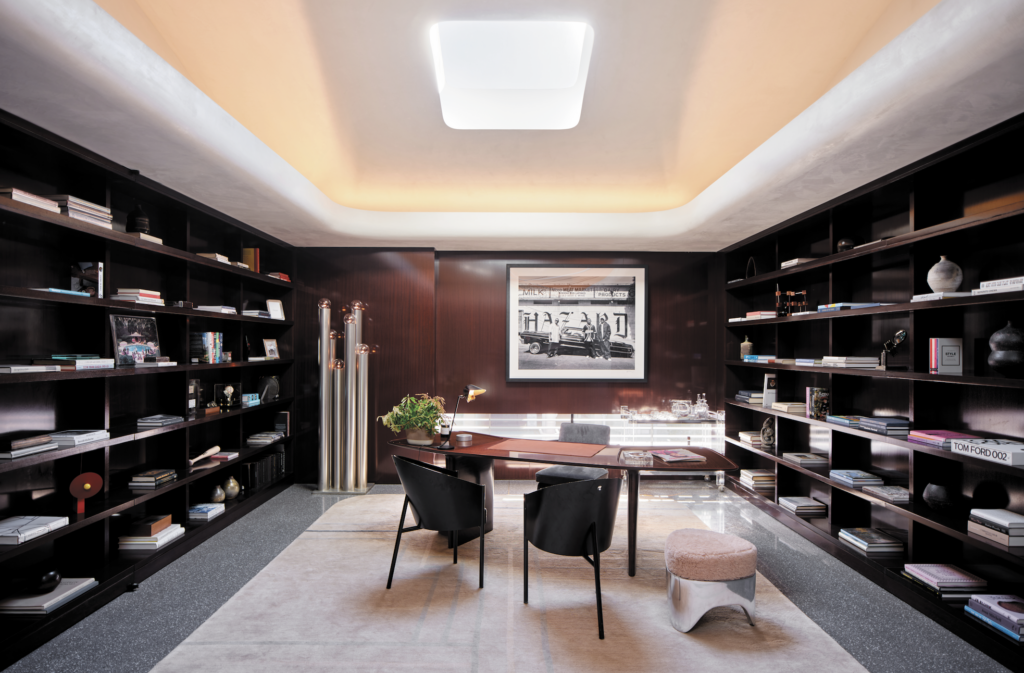
“We used museum glass so they don’t have that weird green tint you often see on modern buildings,” Brunn points out. “It was a huge investment but it’s also part of what makes the structure feel timeless and fit in so seamlessly with its neighbors.” While the building’s other spaces were reserved for retail and a restaurant (in another stroke of luck that arose after this project was completed, it became Funke, the crown jewel in Chef Evan Funke’s dining empire. Brunn oversaw both its elegant interior design and its restrained interior architecture), Rappaport decided to commandeer the leftover square footage in one corner for his company, Westside Estate Agency.

Photo by Brandon Shigeta.
Architect and client worked together to design and furnish the interiors. “As he started buying pieces on 1stDibs, I was interested in creating something that wove in the exterior, which has its roots in art deco moderne, with the interior,” Brunn shares. “The main thread that winds through the space is the blurring of the line between public and private, which coincides with the deepening of privacy as you move from the street into his office and suite.” From the street level, the welcome into the office resembles a gallery, with an imposing reception desk. That impression is strengthened by pieces from Rappaport’s extensive art collection, including a piece by Roy Lichtenstein and Two Legs and a Table, a sculptural yet functional piece from artist Ron Arad. A tree, tucked within the stairwell, is an arrow directing movement upward, its form reflected in the stainless steel balustrade that ribbons alongside the staircase. Concrete floors give way to custom terrazzo and white walls that morph from a slick, painted finish to the softness of Venetian plaster as the space transforms from commercial to residential in feel. “Our job was really about space making, that layering of texture from beginning to end,” Brunn clarifies.
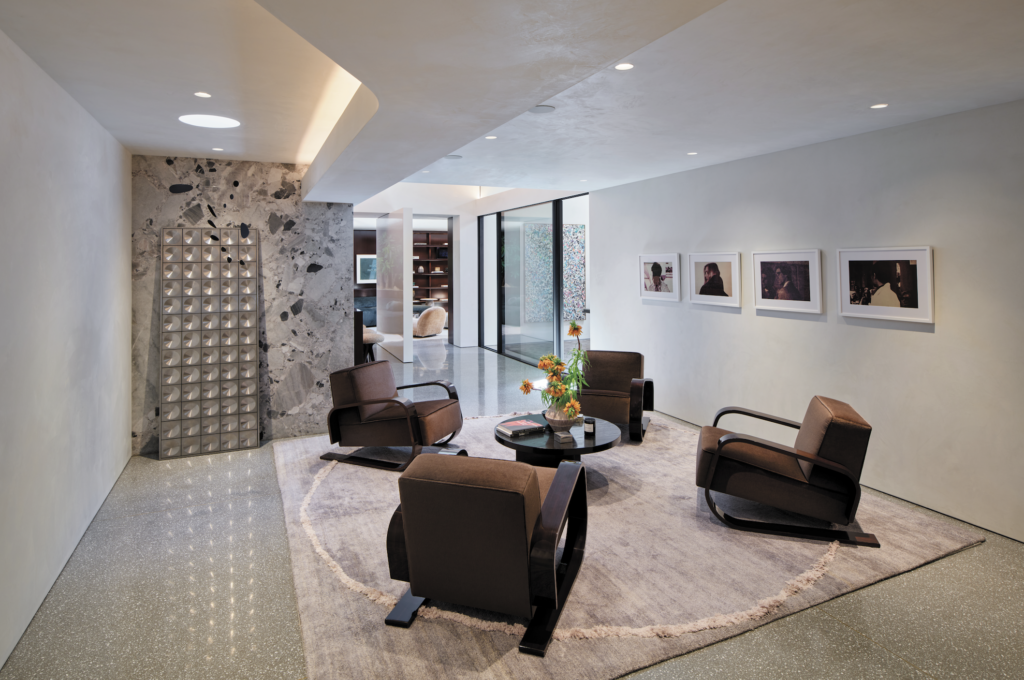
A pivot door, in a glistening auto-body white, offers another frontier to cross. It opens to a room paneled in rich walnut, interspersed with bookshelves. There’s a carpet inlaid into the floor. “I drew inspiration from a traditional English library,” Brunn notes. Sun streams in through the skylight showcasing curvaceous custom furniture, including a built-in sofa, and Rappaport’s desk, designed by Marc Newsom. A bookshelf here presents yet another hurdle to cross; it yields to the touch, opening to a full apartment.
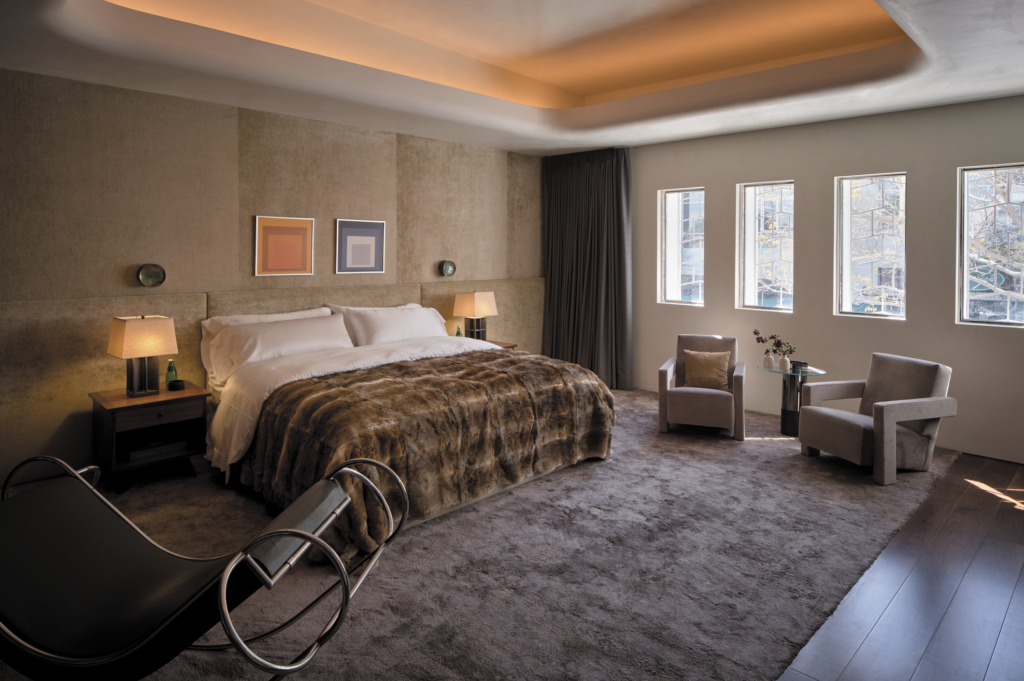
The furnishings and accessories, which range from a pair of Gerrit Thomas Rietveld’s Utrecht chairs to a Prouvé lamp, are all originals. “They’re all vintage. Everything is from auction houses; there’s nothing new,” says Brunn. “I’ve never worked with a client like this. It was amazing.” says Brunn. A lucky break, for which he was well prepared.
The post Case Study appeared first on California Home+Design.
GET MORE INFORMATION
